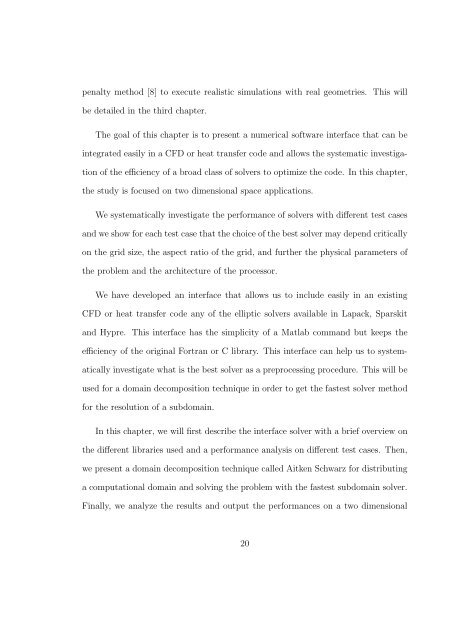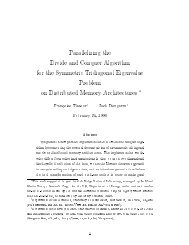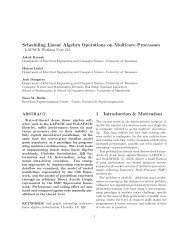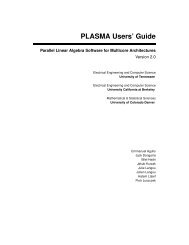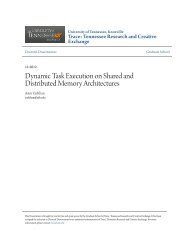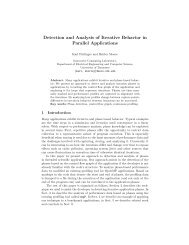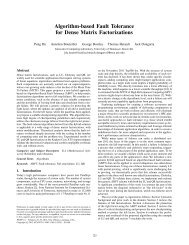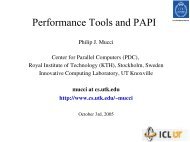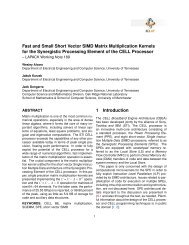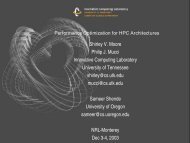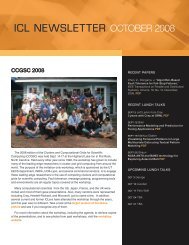efficient parallel computation to simulate blood flow - CiteSeerX
efficient parallel computation to simulate blood flow - CiteSeerX
efficient parallel computation to simulate blood flow - CiteSeerX
Create successful ePaper yourself
Turn your PDF publications into a flip-book with our unique Google optimized e-Paper software.
penalty method [8] <strong>to</strong> execute realistic simulations with real geometries. This will<br />
be detailed in the third chapter.<br />
The goal of this chapter is <strong>to</strong> present a numerical software interface that can be<br />
integrated easily in a CFD or heat transfer code and allows the systematic investigation<br />
of the efficiency of a broad class of solvers <strong>to</strong> optimize the code. In this chapter,<br />
the study is focused on two dimensional space applications.<br />
We systematically investigate the performance of solvers with different test cases<br />
and we show for each test case that the choice of the best solver may depend critically<br />
on the grid size, the aspect ratio of the grid, and further the physical parameters of<br />
the problem and the architecture of the processor.<br />
We have developed an interface that allows us <strong>to</strong> include easily in an existing<br />
CFD or heat transfer code any of the elliptic solvers available in Lapack, Sparskit<br />
and Hypre. This interface has the simplicity of a Matlab command but keeps the<br />
efficiency of the original Fortran or C library. This interface can help us <strong>to</strong> systematically<br />
investigate what is the best solver as a preprocessing procedure. This will be<br />
used for a domain decomposition technique in order <strong>to</strong> get the fastest solver method<br />
for the resolution of a subdomain.<br />
In this chapter, we will first describe the interface solver with a brief overview on<br />
the different libraries used and a performance analysis on different test cases. Then,<br />
we present a domain decomposition technique called Aitken Schwarz for distributing<br />
a <strong>computation</strong>al domain and solving the problem with the fastest subdomain solver.<br />
Finally, we analyze the results and output the performances on a two dimensional<br />
20


